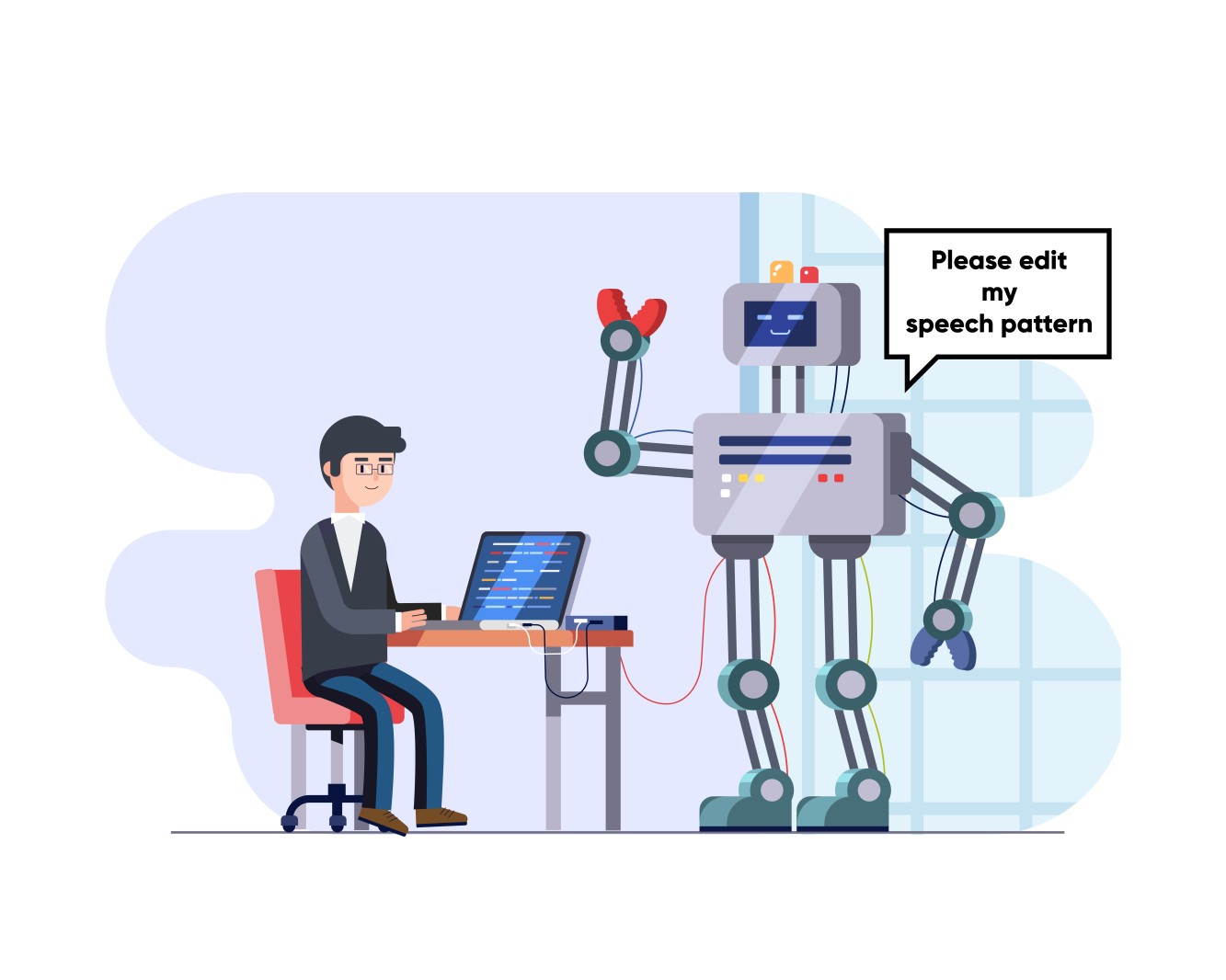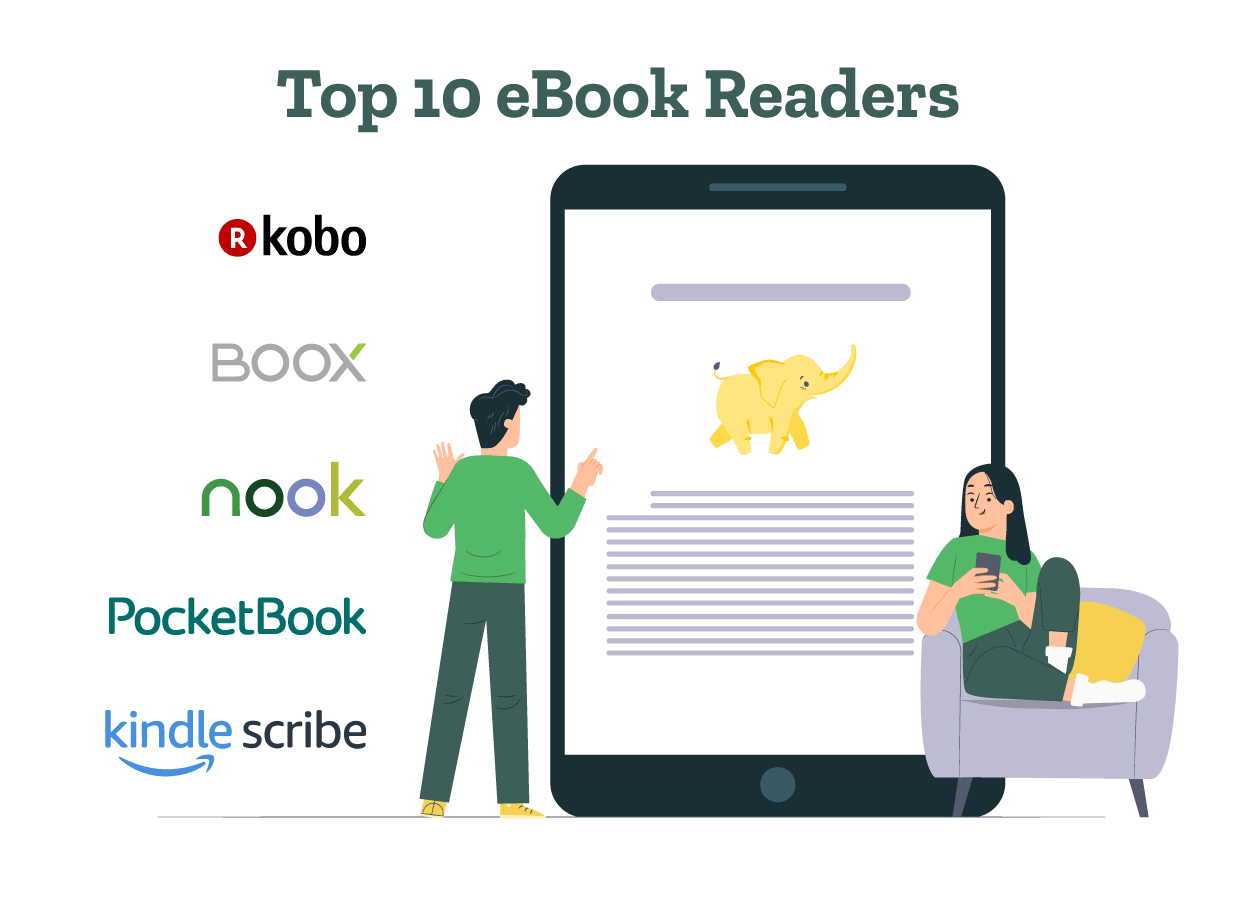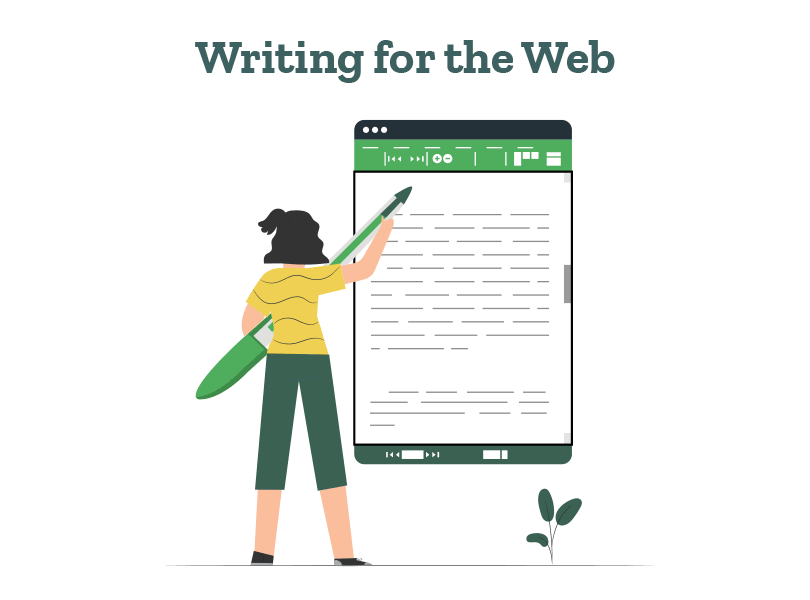- Tips to Self-Edit Your Dissertation
- Guide to Essay Editing: Methods, Tips, & Examples
- Journal Article Proofreading: Process, Cost, & Checklist
- The A–Z of Dissertation Editing: Standard Rates & Involved Steps
- Research Paper Editing | Guide to a Perfect Research Paper
- Dissertation Proofreading | Definition & Standard Rates
- Thesis Proofreading | Definition, Importance & Standard Pricing
- Research Paper Proofreading | Definition & Standard Rates
- Essay Proofreading | Options, Cost & Checklist
- Top 10 Paper Editing Services of 2024 (Costs & Features)
- Top 10 Essay Checkers in 2024 (Free & Paid)
- Top 10 English Correctors to Perfect Your Text in 2024
- 10 Advanced AI Text Editors to Transform Writing in 2024
- Personal Statement Editing Services: Craft a Winning Essay
- College Essay Review: A Step-by-Step Guide (With Examples)
- Top 10 College Essay Review Services: Pricing and Benefits
- How to Edit a College Admission Essay (8-Step Guide)
- Improve Academic Writing: Types, Tips, Examples, Services
- How to Use AI to Write Research Papers: A Step-by-Step Guide
- How to Write an Assignment: A Step-by-Step Guide for Students
- AI Proofreading Services: Meaning, Benefits & Best Tools
- 10 Best Proofreading Services Online for All in 2025
- Top 10 Recommendation Letter Editing Services | Best Picks
- How to Format an Appendix: APA and MLA
- Top 10 Online Thesis Editing and Proofreading Services
- What is Academic Editing? Meaning, Types & Importance
- Top 10 AI Proofreaders to Perfect Your Writing in 2025
- What Is a Thesis: How to Write a Thesis with Examples
- Top 10 Academic Proofreading Services (2025 Update)
- Research Paper Outline: Free Templates & Examples to Guide You
- How to Write a Research Paper: A Step-by-Step Guide
- How to Write a Lab Report: Examples from Academic Editors
- Research Methodology Guide: Writing Tips, Types, & Examples
- The 10 Best Essential Resources for Academic Research
- 100+ Useful ChatGPT Prompts for Thesis Writing in 2024
- Best ChatGPT Prompts for Academic Writing (100+ Prompts!)
- Sampling Methods Guide: Types, Strategies, and Examples
- Independent vs. Dependent Variables | Meaning & Examples
- Understanding Verbatim Plagiarism: Copy, Paste, Regret
- What Is a Journal Article and How to Write a Journal Article
- How to Use AI to Write Research Papers: A Step-by-Step Guide
- Top 10 AI Tools for Research in 2025 (Fast & Efficient!)
- What Is a Research Proposal: A Detailed Guide
- How to Format an Appendix: APA and MLA
- What Is an Appendix In a Paper?
- Types of Journals in Research and Their Features
- How to Write a Research Proposal (Step-by-Step)
- How to Cite an Artwork: APA, MLA, & Chicago
- Difference Between Paper Editing and Peer Review
- How to Handle Journal Rejection: Essential Tips
- Editing and Proofreading Academic Papers: A Short Guide
- How to Carry Out Secondary Research
- The Results Section of a Dissertation
- Final Checklist: Is My Article Ready for Submitting to Journals?
- Types of Research Articles to Boost Your Research Profile
- How does LaTeX based proofreading work?
- How to Improve Your Scientific Writing: A Short Guide
- Chicago Title, Cover Page & Body | Paper Format Guidelines
- How to Write a Thesis Statement: Examples & Tips
- Chicago Style Citation: Quick Guide & Examples
- Research Paper Outline: Free Templates & Examples to Guide You
- The A-Z Of Publishing Your Article in A Journal
- What is Journal Article Editing? 3 Reasons You Need It
- How to Cite a Book in APA Style | Format & Examples
- How to Start a Research Paper | Step-by-step Guide
- APA Citations Made Easy with Our Concise Guide for 2024
- A Step-by-Step Guide to APA Formatting Style (7th Edition)
- Academic Writing in 2024: 5 Key Dos & Don’ts + Examples
- How to Write a Lab Report: Examples from Academic Editors
- What Are the Standard Book Sizes for Publishing Your Book?
- MLA Works Cited Page: Quick Tips & Examples
- 2024’s Top 10 Thesis Statement Generators (Free Included!)
- Top 10 Title Page Generators for Students in 2024
- What Is an Open Access Journal? 10 Myths Busted!
- Primary vs. Secondary Sources: Definition, Types & Examples
- How To Write a College Admissions Essay That Stands Out
- APA Journal Citation: 7 Types, In-Text Rules, & Examples
- What Is Predatory Publishing and How to Avoid It!
- Independent vs. Dependent Variables | Meaning & Examples
- How to Write a Strong Dissertation & Thesis Introduction
- How to Cite a Book in MLA Format (9th Edition)
- How to Cite a Website in MLA Format | 9th Edition Rules
- 10 Best AI Conclusion Generators (Features & Pricing)
- Top 10 Academic Editing Services of 2024 [with Pricing]
- How to Create the Perfect Thesis Title Page in 2024
- What Is Accidental Plagiarism & 9 Prevention Strategies
- What Is Self-Plagiarism? (+ 7 Prevention Strategies!)
- Understanding Verbatim Plagiarism: Copy, Paste, Regret
- Improve Academic Writing: Types, Tips, Examples, Services
- What Is a Journal Article and How to Write a Journal Article
- What Is Paraphrasing Plagiarism and How to Avoid It
- What Is Expository Writing? Types, Examples, & 10 Tips
- Academic Research Ethics & Rules Simplified for All
- Complete Guide to MLA 9th Format
- Top 10 Online Dissertation Editing Services of 2025
- How to Write a Dissertation & Thesis Conclusion (+ Examples)
- What Is a Peer Review & 8 Types of Peer Review Processes
- 50 Best Essay Prompts for College Students in 2025
- What Is an Annotated Bibliography & Writing One Using AI
- What Is an Appendix In a Paper?
- Types of Journals in Research and Their Features
- 5 Effective Personal Statement Examples & Templates
- 100+ Writing Prompts for College Students (10+ Categories!)
- What Is a Thesis: How to Write a Thesis with Examples
- What Is Plagiarism? Meaning, Types & Examples
- How to Write a Research Proposal (Step-by-Step)
- Preventing Plagiarism in Your Thesis: Tips & Best Practices
- Final Submission Checklist | Dissertation & Thesis
- 7 Useful MS Word Formatting Tips for Dissertation Writing
- How to Write a MEAL Paragraph: Writing Plan Explained in Detail
- How does LaTeX based proofreading work?
- Em Dash vs. En Dash vs. Hyphen: When to Use Which
- 2024’s Top 10 Self-Help Books for Better Living
- Top 10 Paper Editing Services of 2024 (Costs & Features)
- 100+ Useful ChatGPT Prompts for Thesis Writing in 2024
- Best ChatGPT Prompts for Academic Writing (100+ Prompts!)
- MLA Works Cited Page: Quick Tips & Examples
- 2024’s Top 10 Thesis Statement Generators (Free Included!)
- Top 10 Title Page Generators for Students in 2024
- 10 Advanced AI Text Editors to Transform Writing in 2024
- Top 10 Academic Editing Services of 2024 [with Pricing]
- Know Everything About How to Make an Audiobook
- How to Create the Perfect Thesis Title Page in 2024
- Mastering Metaphors: Definition, Types, and Examples
- 10 Best Paid & Free Citation Generators (Features & Costs)
- The 10 Best Free Character and Word Counters of 2025
- What Is an Annotated Bibliography & Writing One Using AI
- Top 10 AI Proofreaders to Perfect Your Writing in 2025
- What Is Plagiarism? Meaning, Types & Examples
- Top 10 Academic Proofreading Services (2025 Update)
- Citing References: APA, MLA, and Chicago
- How to Cite Sources in the MLA Format
- MLA Citation Examples: Cite Essays, Websites, Movies & More
- Chicago Title, Cover Page & Body | Paper Format Guidelines
- Chicago Style Citation: Quick Guide & Examples
- Citations and References: What Are They and Why They Matter
- APA Headings & Subheadings | Formatting Guidelines & Examples
- Formatting an APA Reference Page | Template & Examples
- How to Create an MLA Title Page | Format, Steps, & Examples
- How to Create an MLA Header | Format Guidelines & Examples
- MLA Annotated Bibliography | Guidelines and Examples
- APA Website Citation (7th Edition) Guide | Format & Examples
- APA Citations Made Easy with Our Concise Guide for 2024
- APA Citation Examples: The Bible, TED Talk, PPT & More
- APA Header Format: 5 Steps & Running Head Examples
- A Step-by-Step Guide to APA Formatting Style (7th Edition)
- How to Write an Abstract in MLA Format: Tips & Examples
- APA Journal Citation: 7 Types, In-Text Rules, & Examples
- How to Cite a Book in MLA Format (9th Edition)
- How to Cite a Website in MLA Format | 9th Edition Rules
- 10 Best Paid & Free Citation Generators (Features & Costs)
- Complete Guide to MLA 9th Format
- Research Paper Format: APA, MLA, & Chicago Style
- 5 Reasons Why It Is Important To Cite Your Sources
- APA Title Page Format Simplified | Examples + Free Template
- How to Cite an Artwork: APA, MLA, & Chicago
- 10 Best Free Plagiarism Checkers | Accurate & Reliable Tools
- Writing a Dissertation Proposal
- The Acknowledgments Section of a Dissertation
- The Table of Contents Page of a Dissertation
- The Introduction Chapter of a Dissertation
- Tips to Self-Edit Your Dissertation
- The Results Section of a Dissertation
- Preventing Plagiarism in Your Thesis: Tips & Best Practices
- Final Submission Checklist | Dissertation & Thesis
- The Only Dissertation Toolkit You’ll Ever Need!
- 7 Useful MS Word Formatting Tips for Dissertation Writing
- 5 Thesis Writing Tips for Master Procrastinators
- The 5 Things to Look for in a Dissertation Editing Service
- Top 10 Dissertation Editing & Proofreading Services
- Why is it important to add references to your thesis?
- Thesis Editing | Definition, Scope & Standard Rates
- Expert Formatting Tips on MS Word for Dissertations
- A 7-Step Guide on How to Choose a Dissertation Topic
- 350 Best Dissertation Topic Ideas for All Streams in 2024
- A Guide on How to Write an Abstract for a Research Paper
- Dissertation Defense: What to Expect and How to Prepare
- Creating a Dissertation Title Page (Examples & Templates)
- Top 10 Online Dissertation Editing Services of 2025
- A Beginner’s Guide to How to Write a Dissertation in 2025
- What Is a Research Proposal: A Detailed Guide
- How to Write a Dissertation Literature Review: Tips and Structure
- What Is a Thesis: How to Write a Thesis with Examples
- Essential Research Tips for Essay Writing
- How to Write a MEAL Paragraph: Writing Plan Explained in Detail
- How to Write a Thesis Statement: Examples & Tips
- What Is a Mind Map? Free Mind Map Templates & Examples
- How to Write an Essay Outline: Free Template & Examples
- How to Write an Essay: 8 Simple Steps with Examples
- Expository Essay: Structure, Tips, and Examples
- Guide to Essay Editing: Methods, Tips, & Examples
- Narrative Essays: Structure, Tips, and Examples
- How to Write an Argumentative Essay (Examples Included)
- How to Write a Conclusion for an Essay (Examples Included!)
- How to Write an Impactful Personal Statement (Examples Included)
- Literary Analysis Essay: 5 Steps to a Perfect Assignment
- How to Write a Compare and Contrast Essay: Tips & Examples
- Top 10 Essay Checkers in 2024 (Free & Paid)
- 100 Best College Essay Topics & How to Pick the Perfect One!
- College Essay Format: Tips, Examples, and Free Template
- 10 Best AI Essay Outline Generators of 2024
- Personal Statement Editing Services: Craft a Winning Essay
- College Essay Review: A Step-by-Step Guide (With Examples)
- Top 10 College Essay Review Services: Pricing and Benefits
- How to Write an Assignment: A Step-by-Step Guide for Students
- The Four Main Types of Essay | Quick Summary with Examples
- How to Write an Essay Introduction | 4 Examples & Steps
- 10 Best AI Essay Writing Tools in 2025
- How to Write a Descriptive Essay | Examples and Structure
- Structure of an Essay: 5 Tips to Write an Outstanding Essay
- Types of Introductions and Examples
- Top 10 Essay Editing Services of 2025
- The Best Essay Graders of 2025 That You Can Use for Free!
- What Is an Essay? A Comprehensive Guide to Structure and Types
- Top 10 Free Essay Writing Tools for Students in 2025
- How to Write an Essay Header: MLA and APA Essay Headers
Still have questions? Leave a comment

Checklist: Dissertation Proposal
Enter your email id to get the downloadable right in your inbox!
[contact-form-7 id="12425" title="Checklist: Dissertation Proposal"]
Examples: Edited Papers
Enter your email id to get the downloadable right in your inbox!
[contact-form-7 id="12426" title="Examples: Edited Papers"]Need
Editing and
Proofreading Services?

Primary vs. Secondary Sources: Definition, Types & Examples
 Apr 15, 2024
Apr 15, 2024 6
min read
6
min read
When you’re delving into research, you’ll come across two main types of materials: primary and secondary sources. Understanding the difference between primary and secondary sources is really important for in-depth data analysis or for making a strong argument based on facts.
In this blog, we’ll explore the definitions, importance, and practical methods of identifying and utilizing both primary and secondary sources. We will also look at examples of primary and secondary sources and the differences between them!
Primary sources
Let’s begin with an easy primary source definition:
What are primary sources?
Primary sources are the original, firsthand sources of information or data. These are the initial documents or artifacts produced by individuals who experienced or witnessed an event or collected data at the time it happened. The primary sources offer an unfiltered glimpse into the past or the subject of study.
Examples of primary sources
- Diaries and personal journals.
- Correspondence and letters.
- Manuscripts of literary pieces or scientific papers in their original form.
- Visual creations like photographs, paintings, and artworks.
- Contemporary newspapers and magazines (first-hand accounts)
- Speeches and verbal accounts captured by witnesses or participants.
- Authentic paperwork such as governmental records, birth certificates, and treaties.
- Artifacts and relics.
- Conversations held with eyewitnesses or participants of past events.
- Audio or video recordings documenting live happenings or presentations.
Why are primary sources important?
Primary sources are key in research, offering a direct link to the past and allowing for a deep grasp of historical and cultural backgrounds. They play a crucial role in lending credibility to historical research and validating theories and narratives. Additionally, they empower researchers to form their own conclusions independently, making them especially valuable in fields like history, literature, and anthropology, where the accuracy of accounts is paramount.
How to find primary sources
Finding primary academic sources may seem tricky, but it’s a crucial skill for academic research. Libraries and archives are great places to start your search for primary source material. Nowadays, many institutions have online archives where you can find digitized versions of documents and artifacts.
You can also check out online databases and academic journals for original research articles, especially in fields like science and social sciences. Government websites often have official documents available for access too. And if you’re looking for historical documents, repositories like the National Archives or Library of Congress have extensive collections online.
Types of primary sources
- Written records: These are things like letters, diaries, and official documents written by people who saw or were part of the events.
- Visual material: This includes pictures, paintings, maps, and posters that show what things looked like in the past.
- Audio recordings: These are the interviews, speeches, and sound recordings that let you hear what people say about the events.
- Audiovisual material: These are films, documentaries, and TV shows that let you see and hear what happened.
- Artifacts and objects: These are physical items like tools, clothes, and artworks that give us clues about how people lived in the past.
- Archaeological finds: These are things like ancient artifacts and ruins that help us understand ancient civilizations.
- Digital sources: These are websites, social media posts, and blogs that give us modern perspectives on events as they happen.
How to tell if a source is primary?
A source is primary if:
- Created during the time period being studied.
- Provide firsthand accounts, original data, or direct evidence.
- Examples include diaries, letters, speeches, photographs, interviews, and artifacts.
Now, we will move on to learning about secondary sources in detail!
Secondary sources
Let’s begin with an easy secondary source definition:
What are secondary sources?
Secondary sources help analyze or critique primary sources. Their main purpose is to provide interpretation, commentary, or scholarly analysis. They gather information to give a summary of a subject, making conclusions or talking about patterns using original data.
Examples of secondary sources
- Books for study
- Articles summarizing research
- Magazine stories
- Life stories written by others
- Information books
- Newspaper pieces discussing events or research
- Summaries of research in literature
- Shows or films explaining history or science
- Evaluations or discussions about books
- Opinions or breakdowns from field experts.
Why are secondary sources important?
Secondary sources provide context for original data, giving us a better understanding of how experts view research findings or historical occurrences. They help researchers grasp the importance of primary documents and assist in shaping their secondary research questions or main arguments.
How to find secondary sources
Finding secondary sources is generally easier than finding primary materials. Most academic libraries offer access to a vast array of secondary literature through digital databases such as JSTOR, Google Scholar, or specific publisher databases. Secondary materials are also widely available in bookstores and libraries.
Types of secondary sources
- Journal articles: Peer-reviewed articles published in journals present research findings, analyses, and interpretations of historical topics or phenomena.
- Encyclopedias and dictionaries: Reference works such as encyclopedias and dictionaries compile summaries, explanations, and definitions of historical events, concepts, and figures.
- Historical reviews and surveys: Historical reviews and surveys give wide-ranging looks at particular historical times, topics, or places. They summarize existing scholarship, provide historical context, and identify key themes and trends.
- Documentary films and television programs: Documentaries and television programs present visual interpretations of historical events. They offer narrative explanations, expert commentary, and archival footage to engage audiences and convey historical information.
- Literature reviews: Literature reviews summarize and analyze existing research and scholarship on a particular topic or question.
- Textbooks: Educational textbooks provide structured overviews of historical periods, events, and themes designed for classroom use.
- Historical websites and online resources: Websites, blogs, and online resources dedicated to historical topics offer a wide range of secondary source material. They include articles, essays, and multimedia content.
How to tell if a source is primary?
A source is secondary if:
- Created after the period being studied.
- Offer analysis, interpretation, or commentary on primary sources.
- Examples include textbooks, articles, documentaries, biographies, and scholarly analyses.
Now that we’ve understood the primary and secondary sources, you must be thinking about when to use primary vs. secondary sources. To get that answer, you’ll have to learn the difference between primary and secondary sources!
What is the difference between primary and secondary sources?
The main difference between primary and secondary sources is that primary sources are firsthand accounts or original records of events, while secondary sources are interpretations or analyses of those events by others.
When to use primary vs. secondary sources?
When to use primary sources
- You want to examine firsthand accounts or original documents related to your topic.
- You need to analyze raw data or evidence to form your own interpretations.
- You’re conducting historical research and need to access documents created during the period you’re studying.
- You want to explore multiple perspectives or experiences directly from the source.
When to use secondary sources
- You’re looking for expert analysis, interpretation, or summaries of primary sources.
- You need background information or context on a topic before delving into primary sources.
- You want to compare different scholarly interpretations or viewpoints on a subject.
- You’re conducting preliminary research and need an overview of existing research findings.
Each type of source brings something important to the table, helping you get a full picture of whatever you’re looking into. By getting good at using both primary and secondary sources, researchers can really level up their work with depth, context, and factual evidence.
Also, if you ever need an extra set of eyes to make sure your research is polished to perfection, don’t forget about PaperTrue’s expert editing and proofreading services! Our team is here to help your work shine. Our team is here to help your work achieve its full potential.
Here are some more useful resources to help:
Frequently Asked Questions






